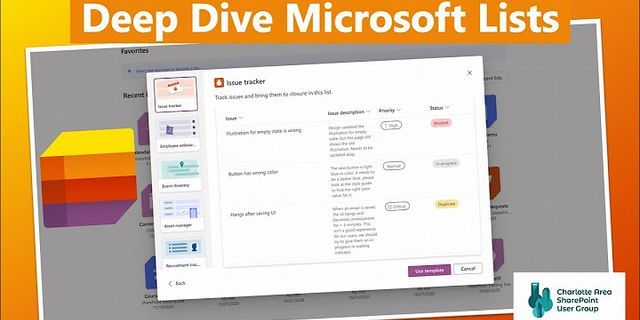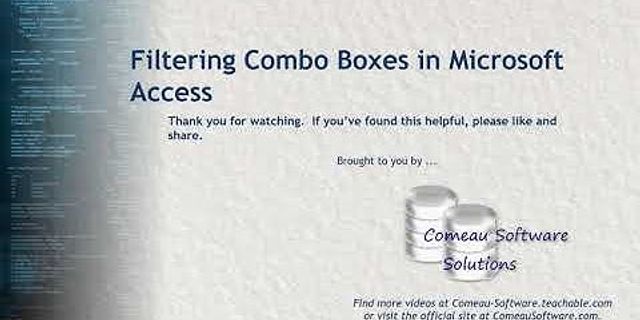A data collection form is a way of recording approach to obtaining the data that need to perform the analysis. The Measure phase of a Six Sigma focuses on data collection. Measuring parameters must be inline with the problem definition, operator to collect the data inconsistent with the process flow map, and also needs to include the inputs and outputs. Show The data should record by trained operators with a calibrated instrument, and also in a standard data collection form. Too many people rush out to collect data without creating a formalized approach indicated in the data collection plan. Thought to the kinds of techniques they will use (like sampling), the categories of data needed, how they will ensure data accuracy and validity if their measurement systems are adequate, and the necessary effort to obtain the data. Why Use a data collection form?Data collection is a systematic process of collecting and analyzing information to extend solutions to relevant questions and evaluate the results. Filling a data collection form forces the operator to answer those questions explicitly. Recording data in a form also get the benefit of posterity. In the future, when six sigma teams presenting or defending the research, it will show the evidence of how the teams approached the problem. It also helps when the organizations further extend or repeat the data collection, gets an idea of how and why the data captured. How to Create a Data Collection Form
Different types of data collection forms can be created. Here’s an example:  How to Populate a Data Collection FormData collection includes both manual and automatic methods. Generally, manual data collection can be using printed forms on the shop floor or by data entry in the system at the time of measurement. Automatic data collection includes electronic recorders and digital storage. Automated systems have a high initial cost than the manual system, but it has the advantage of a high accuracy rate. Moreover, the automatic system can fill the form without human interventions. The data collection frequency may be synchronous, based on predefined intervals. Check SheetCheck sheets are one of the useful data collection forms to organize and collect the data. It is a structured, well-prepared form for collecting and analyzing data consisting of a list of items and some indication of how often each item occurs. By collecting data in a standard form, six sigma teams can solve problems and also can make better decisions.
There are several types of check sheets like
 Benefits of check sheet:
ChecklistThe other type of check sheet is called a checklist. The purpose of checklists is to perform repetitive activities, to check a list of requirements, or to collect data in an orderly and systematic manner. Furthermore, checklists help in learning a new process or sophisticated equipment. The purpose of checklists is to make systematic checks of activities or products, ensuring that the operator does not forget anything important.  How to make an efficient checklist
Example of Creating and Using a Data Collection Form in a Six Sigma Project.XYZ Inc is a famous automobile engine manufacturer. The production manager reported an average of eight days delay in delivery to the customer. Six sigma team concluded that delay in shipment is basically due to high failure piston rings in the assembly. Six Sigma team created a data collection form with various defect categories and also asked the operator to 100% inspect the piston rings and report the number of defects hourly.  From the above data, it is clear that Outer Diameter Edge Breakage and Coating thickness defects were the most common defects. Now, it is easy for the six sigma team to identify the root cause and also can take appropriate corrective action. Helpful Excel Template Downloads (Data collection form, checksheet, checklist)This comprehensive OT screening packet makes it easy to do structured observations to assess a wide variety of skills. The data collection forms are perfect for establishing a baseline or progress monitoring, and the checklist helps keep your screening process organized. Specific skill areas addressed include: fine motor, visual motor, visual perception, scissor skills, handwriting, self care, bilateral skills, core strength, balance, gross motor, and cognition & behavior.Here's what you get Page 2Data Binder Editable Data Binder I created this data binder to have my first graders track their own learning throughout the year. In this file, you will find graphs/data tracking pages for: Guided Reading Levels (Levels A-N) DRA Levels (Levels A-30) Words Per Minute (0-20, 20-100, 100-130) Letter Names Letter Sounds Fry Words (1-100, 101-200, 201-300 by 10s and Graphs for 1-25, 26-50, 51-75, 76-100) Dolch Words (Pre-Primer, Primer, 1st Grade, 2nd Grade, 3rd Grade) Addition Facts 0-10 Su Page 3This GROWING BUNDLE includes 100+ different non-editable Special Education data sheets that can be used in person or for distance learning! These Sped data tracking forms are perfect for IEP Goals. DTT, ABA, skills assessments, tracing, tracing datasheets, behavior, behavior graphing, sight words, phonics skills, comprehension, letters, numbers, shapes, addition, subtraction, multiplication, division, HWT, functional skills, and much more! Give to parents to take data at home, or print and use t Page 4Help your students master the data standards with this fun and engaging picture graphs worksheets and activities set. In this Data Sorting and Picture Graphs Worksheets and Activities resource, students learn about data sorting and picture graphs the fun, hands-on way. You will love how easy this print-and-go resource makes your teacher life! Your students will love drawing, cutting, pasting, coloring, using concrete materials, like a die, a spinner, a coin, and a bag of candies to complete thes Page 5The VB-MAPP Assessment is perhaps one of the most commonly used assessments in ABA Therapy. Perfect for new and experienced BCBA's alike, this resource contains everything you'll need to complete Levels 1-3 of the VB-MAPP Assessment. In your download, you'll find the following:★ VB-MAPP Assessment Binders: This includes 3 separate binders (one for each level) with printable materials to assess the following:- Tact (1, 2, 3, 5, 6, 7, 8, 9, 11, 12, 13)- Listener Responding (3, 5, 6, 7, 11, 13)- Vi Page 6Map, plan, organize, reflect, and assess with these forms for the technology teacher. Everything you need to get started or get organized with the ISTE® Standards for Students.ISTE Standards for Students, ©2016, ISTE® (International Society for Technology in Education),iste.org. All rights reserved.Who is this for?K-8 (or any combo) Technology Teachers who want help planning, organizing, and assessing their technology curriculum.What is included? -Curriculum map with space for notes/reflections Page 7Scatter Plots and Data Activity Bundle - This bundle includes 7 classroom activities to support 8th grade scatter plots and two-way tables. All are hands on, engaging, easy to prep, and perfect to incorporate into the classroom, intervention time, tutoring, or as enrichment activities. All activities are directly aligned to CCSS (8.SP.1, 8.SP.2, 8.SP.3, 8.SP.4) and TEKS (8.5C, 8.5D, 8.11A). What is Included?: Please click on the products below to see more information.Constructing Scatter Plo Page 8Four different Data Tracking sheets to obtain measurable, observed data for targeted behaviors. Collected information can be used to report on related IEP goals/objectives (e.g. staying on-task, following directions).Data collection methods include: targeted trials, tallying, time increments, and level of assistance needed (e.g. independent, with prompting, with models, etc.). Space is provided for additional information such as: subject / task description, work requirements, group size, and Page 9This BUNDLED third grade math resource includes printable and digital math worksheets that give your third graders practice solving telling time to the nearest minute, working with picture graphs and bar graphs, measuring to the quarter inch, finding area/perimeter and more (3MD1, 3MD2, 3MD3, 3MD4, 3MD5/6, 3MD7, 3MD8). These Common Core aligned math quick checks are perfect for morning work, assessment, homework, review, fast-finisher activities, exit tickets, and math centers.These math workshe Page 10UPDATED 8/1/2021 YAY! Now this resource is digital too! I've also included TEKS for grades K, 1st, 2nd, 3rd, 4th, and 5th (2nd, 4th, and 5th digital sheets will be added by September)I created this notebook so that my students could increase their accountability. My school is also big on data, goal setting, and personalized learning, so I made something that would help my students understand exactly how they can be successful in the classroom. With this product students will track their data thr Page 11These data notebooks allow students to track data, set goals, create action plans, monitor progress, and reflect on their learning in the classroom. This student goal setting data portfolio includes checklists, arrows, graphs and data reflection sheets that helps students start setting academic and behavior goals. Through classroom discussions students are introduced to the concept of SMART goals, learn how to set a realistic goals, and become active participants in their education. This is Page 12This student data tracking pack for collecting student data is unique because it is 100% student-directed. That means that it will work! You'll have easy prep tools in printable and digital format for setting goals, weekly reflections, numerical data collection. It's great for RTI, parent night, student portfolios, teacher evals, bell ringers, test prep, new year resolutions, informing instruction, and more. Use it all or just what you need. Student Experience: Help students tell their data st Page 13This statistics project is intended as a closure for your sixth grade statistics unit and aligns with ALL of the sixth grade statistics and probability common core state standards. In groups, students work together to choose a statistical question to ask the class. Once the class is surveyed, the group works together to create a frequency table, a dot plot, a histogram, and a box and whiskers plot. After creating their graphs, the groups analyze their data by looking at the mean, median, mode ra Page 14This first grade math resource includes printable and digital math worksheets that give your first graders practice with simple graphs and their data (1MD4). These Common Core aligned math quick checks are perfect for morning work, assessment, homework, review, fast-finisher activities, exit tickets, and math centers. These math worksheets are provided in THREE formats to best fit your classroom needs – Print and Go, Google Slides, and JPEG.Included in this resource are 10 math worksheets:4 page Page 15This Data Literacy Unit is based on the 2020 Ontario Curriculum Expectations. It contains lesson ideas, worksheets, a math center, and a test. It covers sorting data by 2 & 3 attributes, collecting data, creating graphs, analysing graphs, and finding the mode and the mean of data sets.It covers expectations D1.1., D1.2, D1.3, D1.4 & D1.5.This resource also includes a version that can be used with Google Slides™ for Distance Learning. There is a link in the PDF that will take you to a di Page 16This SUPER FUN Data Book will give your students meaningful, hands-on experience collecting, reporting, graphing and analyzing data!!! Students will collect, organize and graph data with whole numbers, fractions and decimals on Dot Plots and Stem-and-Leaf Plots. CCSS 4.MD.B.4 TEKS 4.9A & 4.9B Students will participate in a series of challenges to create data, such as snapping for 10 seconds, and then use their peers' data to create graphs. Students will also answer One and Multi-Step Ques Page 17Looking for a quick, easy way to collect articulation data on your speech therapy students? This articulation progress monitoring kit gives you everything you need to collect data on all of your students with articulation goals for up to four progress monitoring dates.Progress monitor your students using these articulation pages that target the following sounds: B, Ch, D, F, G, J, K, L, M, N, P, R, S, Sh, T, Th, V, Z, L-Blends, R-Blends, S-Blends. Students will easily recognize the pictures of t Page 18Data Analysis Digital Escape Room Google FormsGive your students comprehensive practice on data analysis including variability, mean, median, mode, range, IQR, box and whisker, dot, stem and leaf plots, histograms, relative frequency tables, and more! This is a NO PREP Escape Room using technology! Just hand your students the worksheet, give them URL for the google form and they're ready to go!This resource includes:VariabilityMean, Median, Mode, Range, and Interquartile Range (IQR)Dot PlotsStem Page 19This is a second grade math bundle, that contains all 10 standards within the Measurement and Data 2nd grade Common Core domain. Within this domain, there are full lesson plan units that cover measurement, telling time, counting money, and graphing. Every single unit within this bundle comes with lesson plans, differentiated math group activities, math writing activities, interactive notebook activities, worksheets, assessments, and hands-on centers. What's included in each individual unit:-Pre- Page 20Articulation Progress Trackers allow you to: - TRACK STUDENT PROGRESS - MONITOR STUDENT GROWTH - STAY ORGANIZED - COLLECT BASELINE DATA Currently, 16 target sounds are included (S, Z, L, SH, CH, J, TH, K, G, F, V, AR, ER, OR, Prevocalic R and S-Blends). Trackers allow you to track progress at each level using the sticker chart provided on the first page. You are able monitor progress at the word, phrase and sentence levels and target sounds presented in the initial, medial and final posi Page 21The 21 American History maps, graphs, and charts bundle is a collection of three products already on Teachers Pay Teachers. This is an outstanding way to infuse daily warmups, skill-building activities, and integrate math and data into history class!All three of these products feature 7 maps, graphs, and charts that focus on different time periods in American History. Combined, these 21 activities engage students in data collection, graph and map interpretation, and quantitative analysis. Wha Page 22These data analysis notes and worksheets compare two data sets with regards to shape, center, and spread of data.They cover:comparing data of two sets using histograms, dot plots, box and whisker plots,and stem and leaf plotsshape (symmetrical, skewed right, skewed left)center (mean, median)peaks (mode)spread analyzing what these factors mean in context of the problem4 pages + all answer keysYou may also like:Mean, Median, and Mode Notes & WorksheetsBox and Whisker Plots Notes & Workshee Page 23This SUPER FUN graph and data book will give your students meaningful, hands-on experience collecting, reporting, graphing and analyzing data!!! This graphing activities include scatterplots, dot plots, stem-and-leaf plots and frequency tables and covers these TEKS: 5.9A, 5.9B, & 5.9C. This is a No-Prep resource. All you need to do is print! ***************************************************************************** This resource is part of my 5th Grade TEKS aligned Data & Graphs B Page 24Histograms, stem-and-leaf plots (stem and leaf plots), frequency tables, box-and-whisker plots (box plots / box and whisker plots) -- Represent the same set of data with all displays. Measures of Central Tendency (Mean, Median, Mode) and Measures of Variability (Range and Interquartile Range) are also included. This combo includes a data display template, a matching activity, and a worksheet. ►The Multiple Data Displays Template is useful for creating a frequency table, stem-and-leaf plot, his Page 25Not all math curriculum is awful. Just sum. Ba-da-bum! But when it is bad, it is very, very bad. And unfortunately, a lot of traditional math curriculum is very, very bad. It’s overly complex, too long, impossible to differentiate, difficult to manage, and, frankly, not much fun. It can be hard to wade through all the extras and find the most valuable parts of the lesson. You don’t have time to read dozens of pages in the teacher manual and there are way too many different pieces to prep. Ugh! I Page 26This BUNDLED first grade math resource includes printable and digital math worksheets that give your first graders practice ordering and comparing lengths, measuring objects, telling time to the hour and half hour, and analyzing bar graphs and their data (1MD1, 1MD2, 1MD3, 1MD4). These Common Core aligned math quick checks are perfect for morning work, assessment, homework, review, fast-finisher activities, exit tickets, and math centers. These math worksheets are provided in THREE formats to be |




















